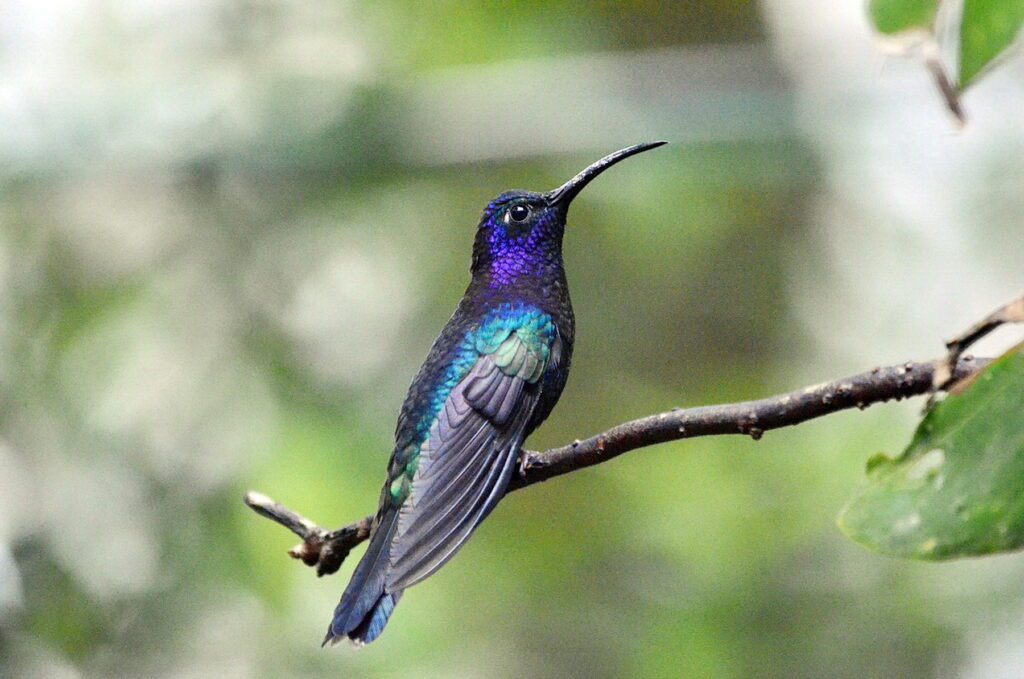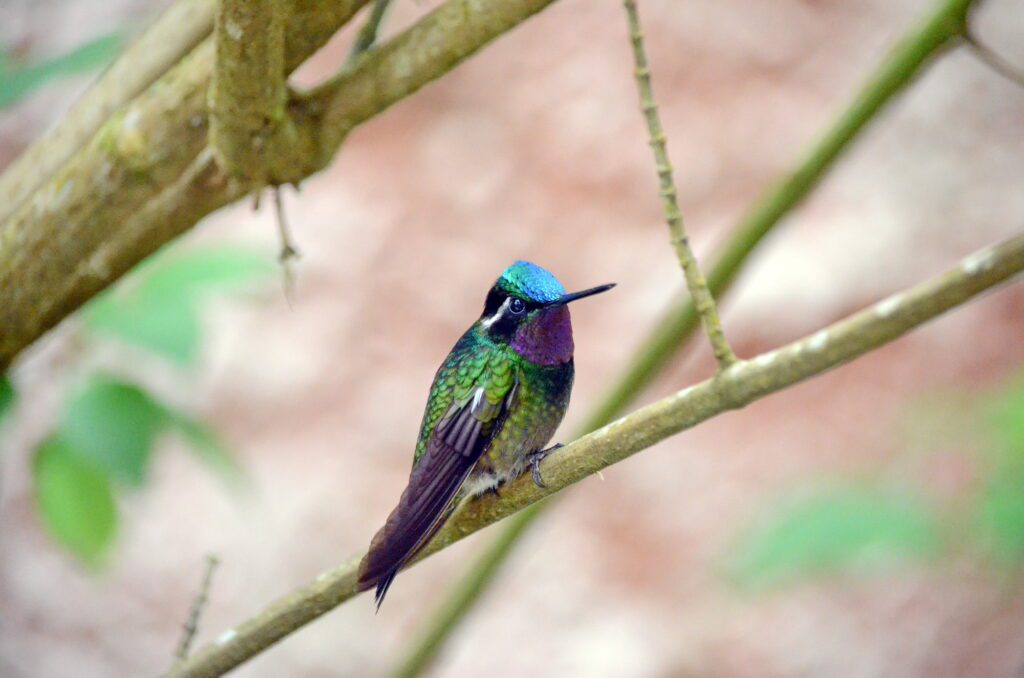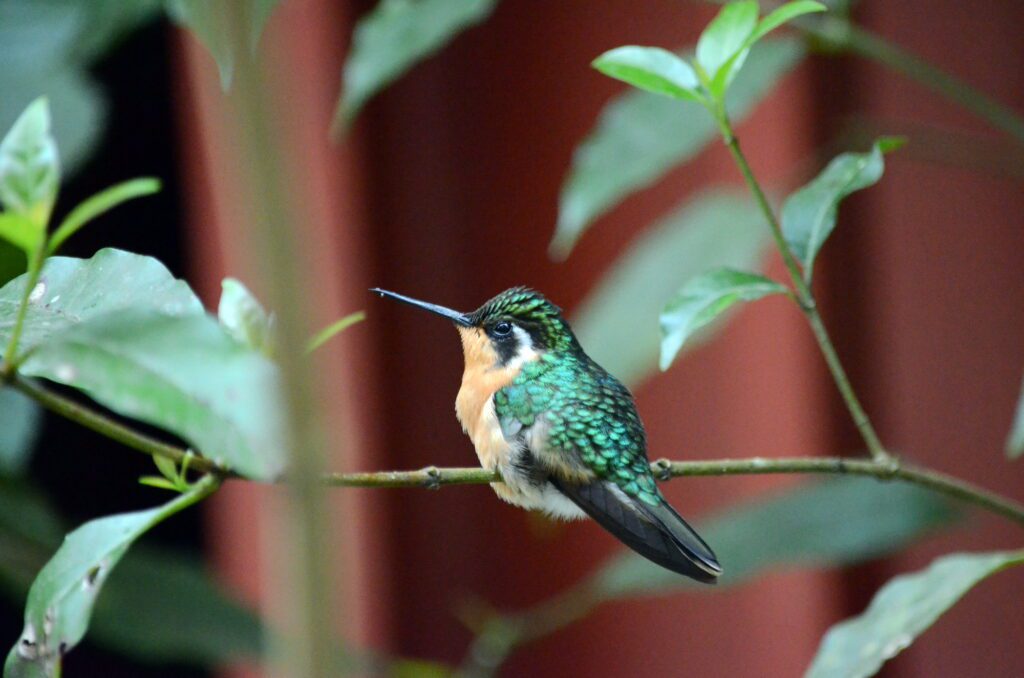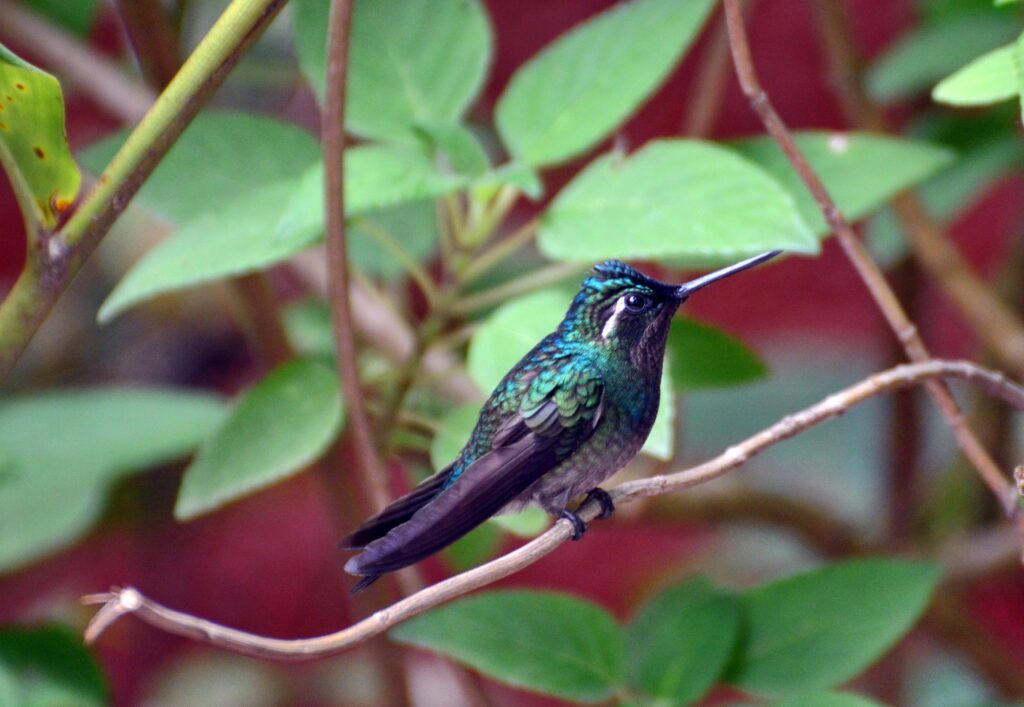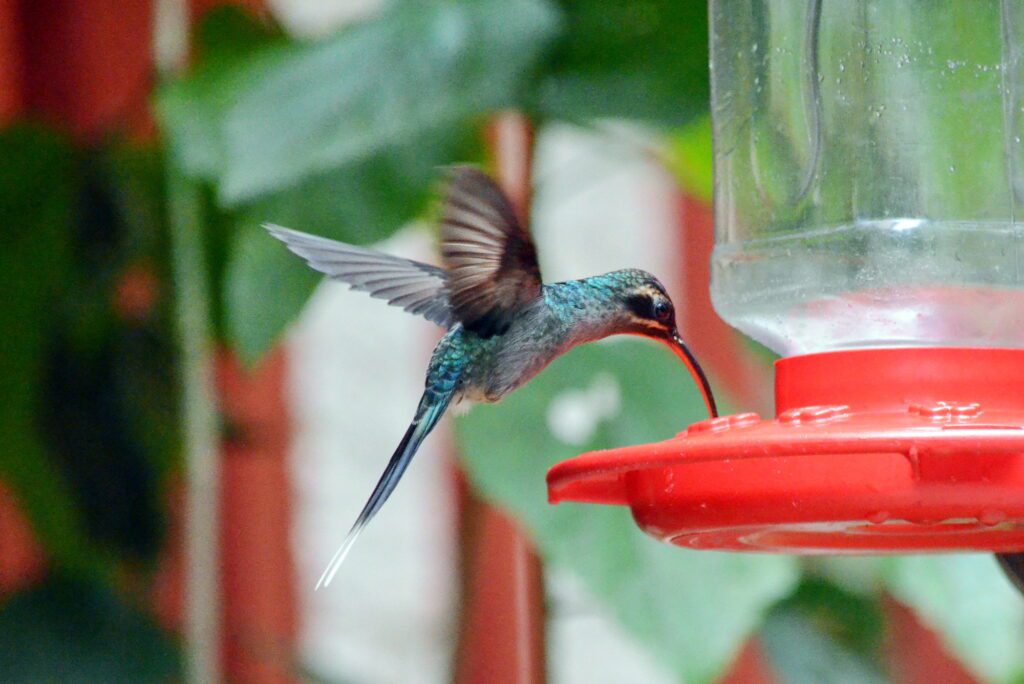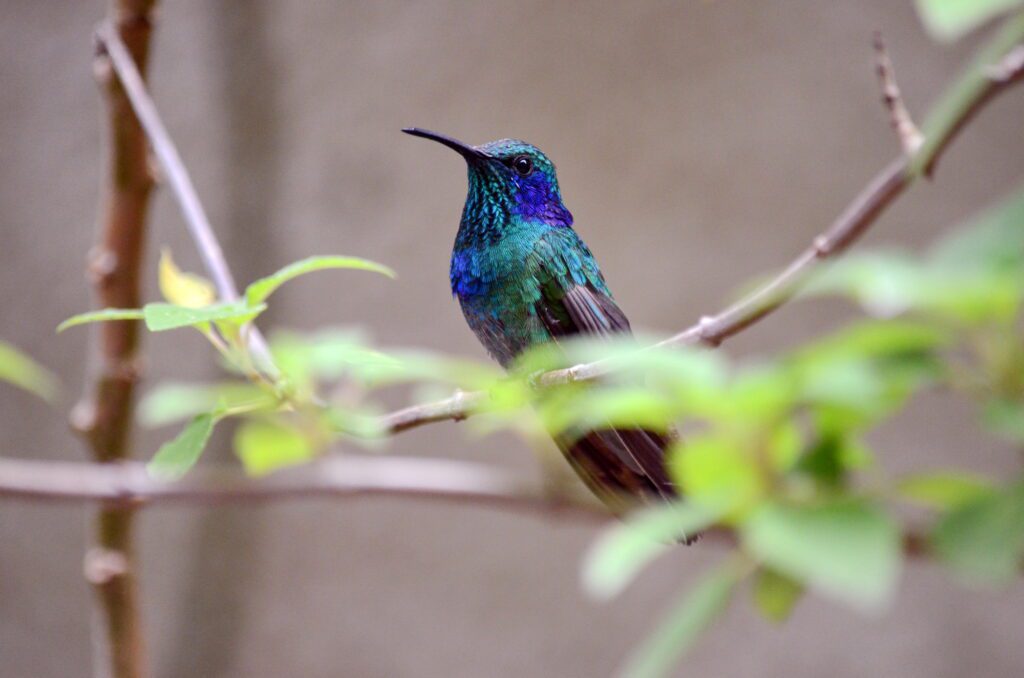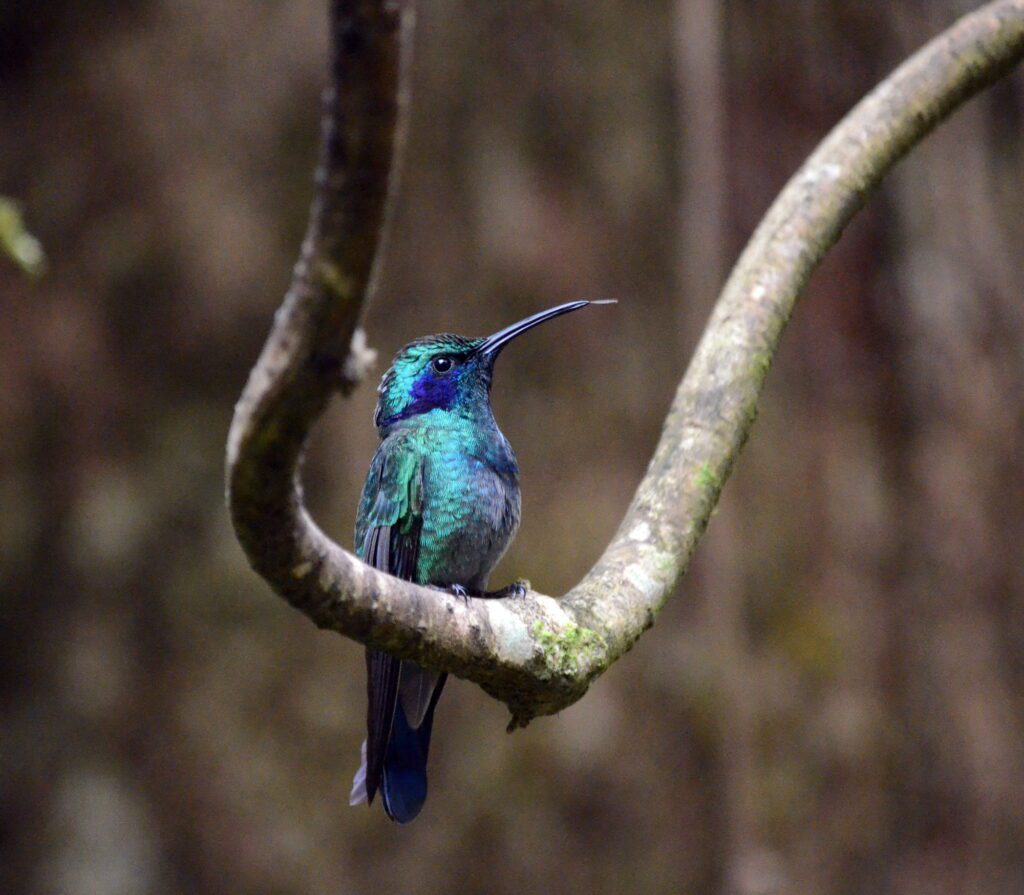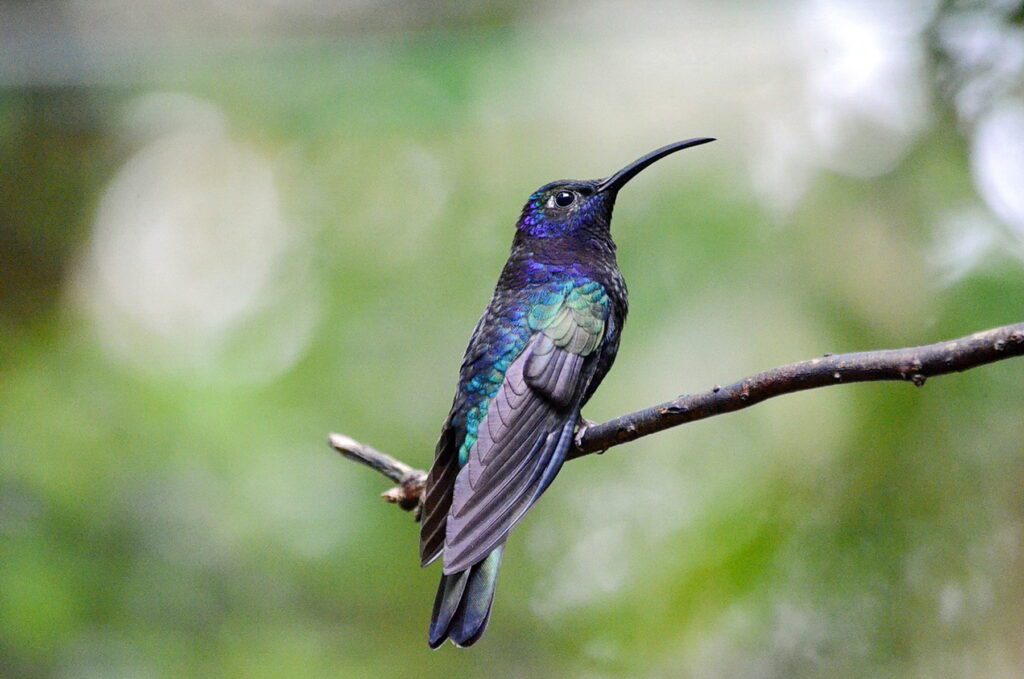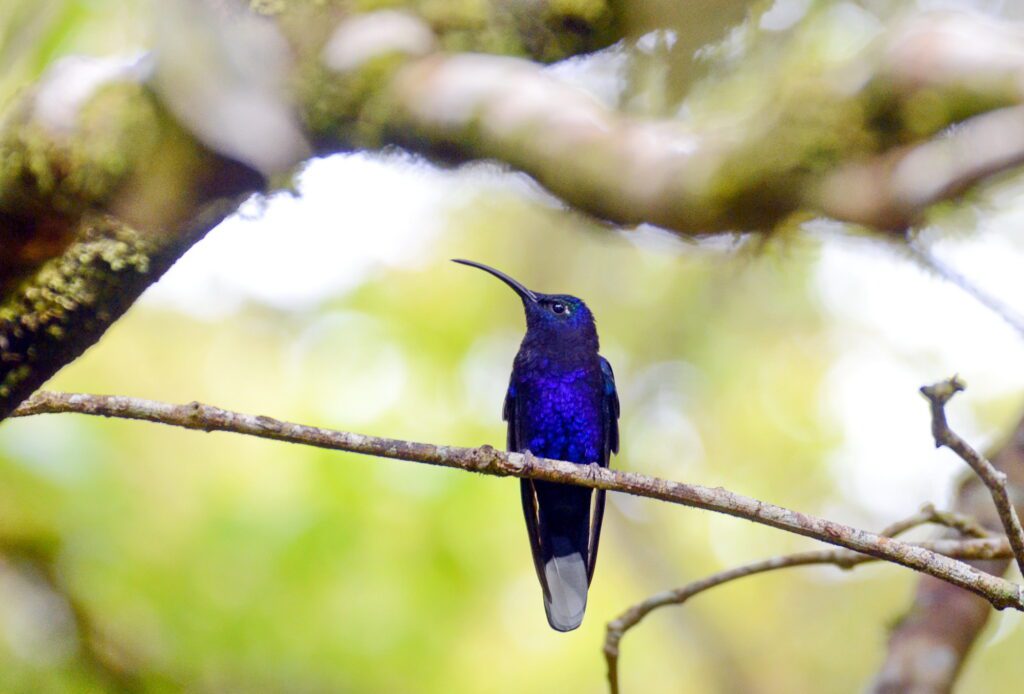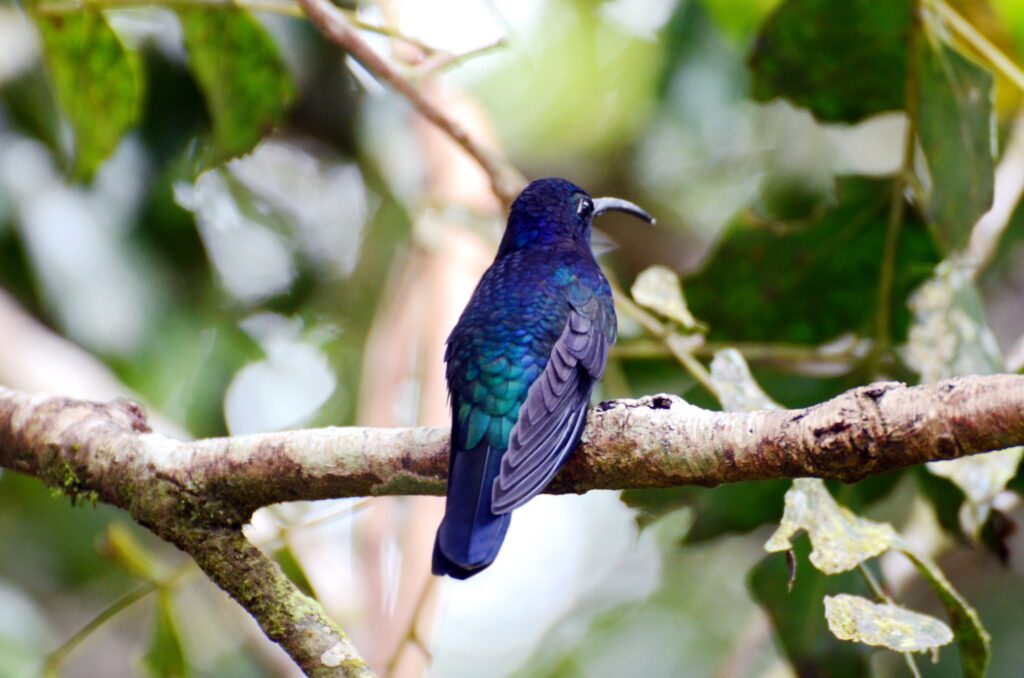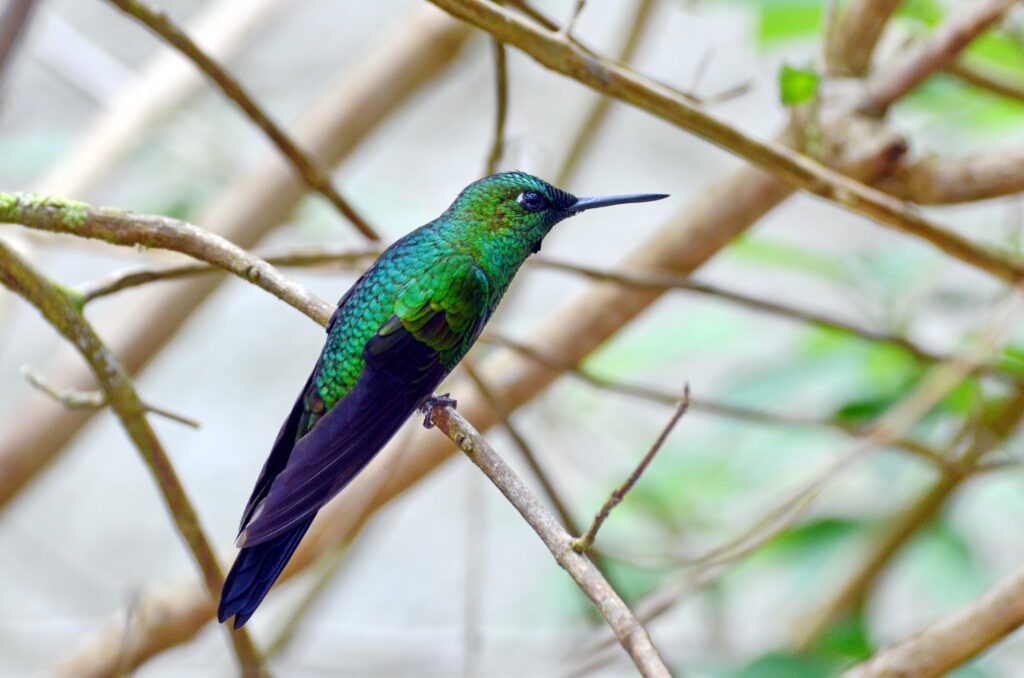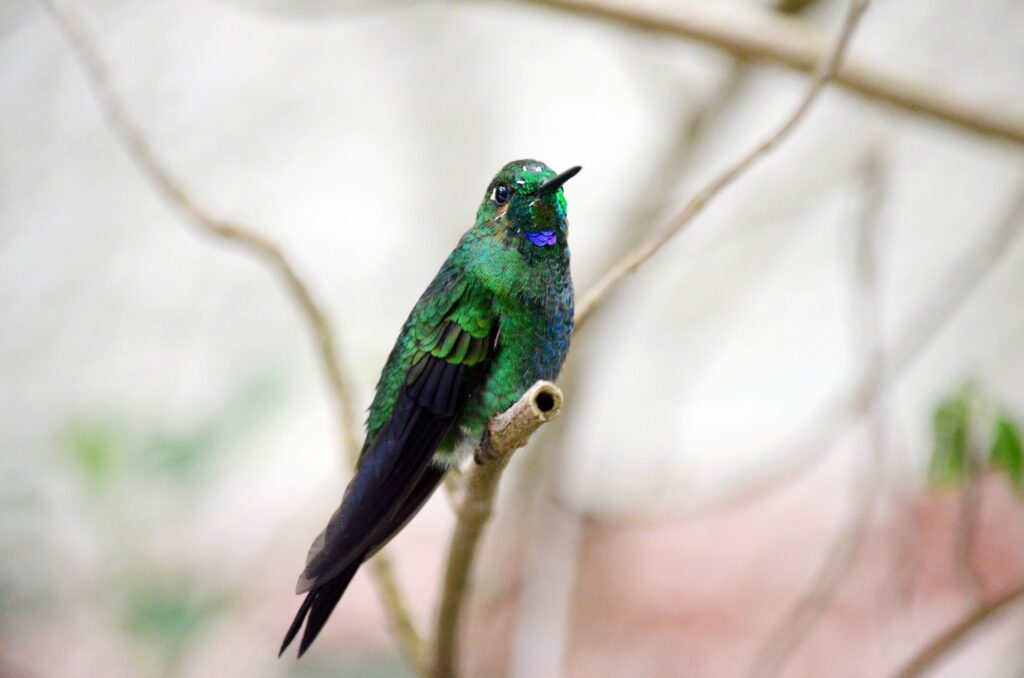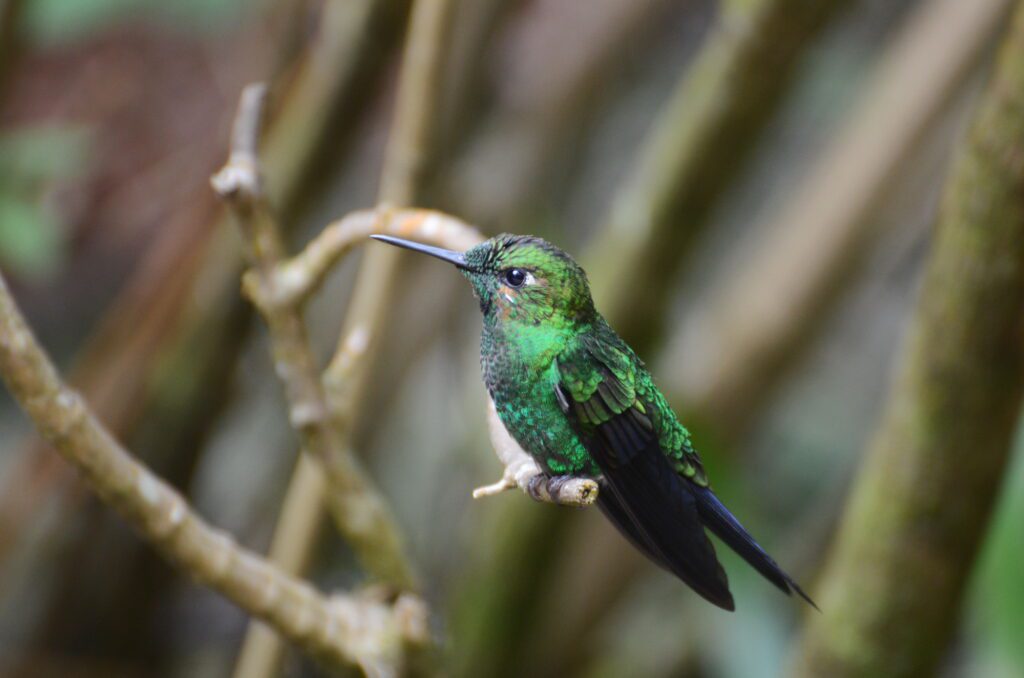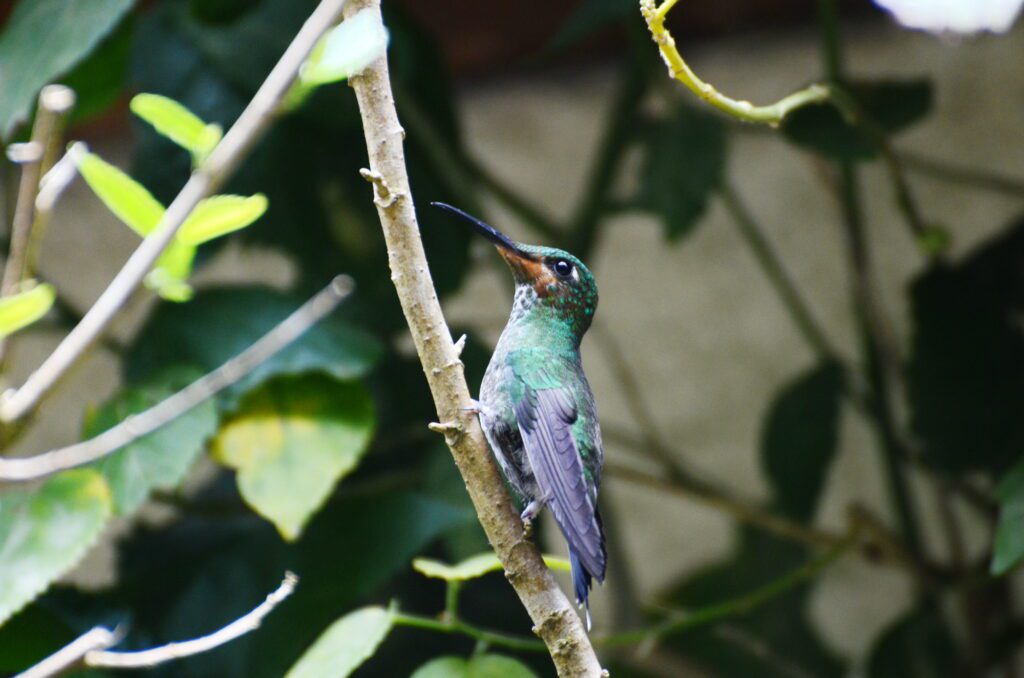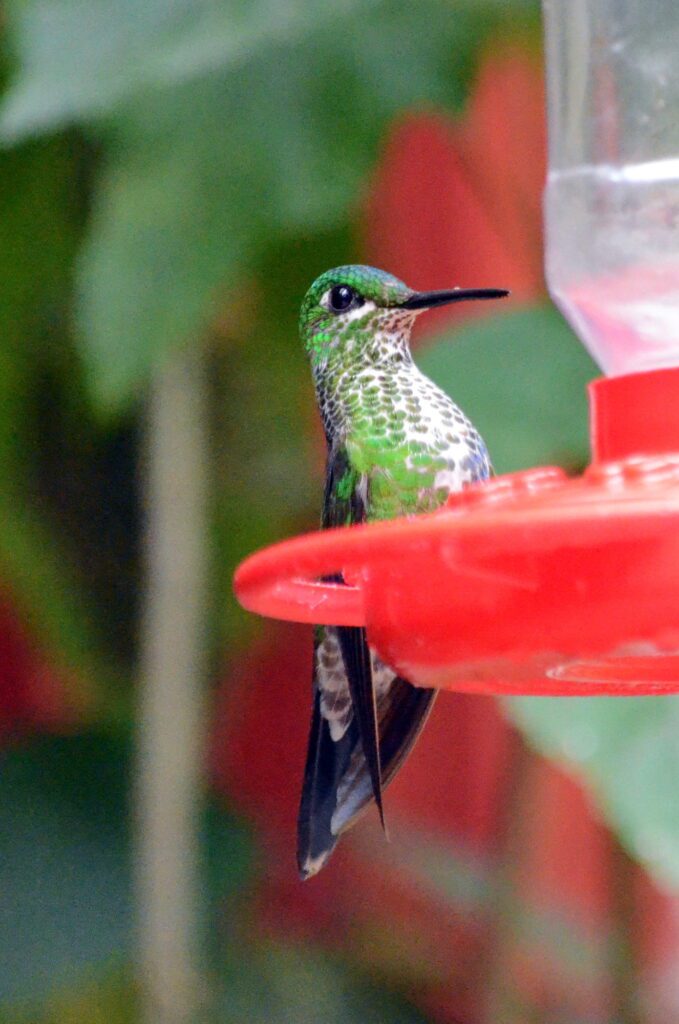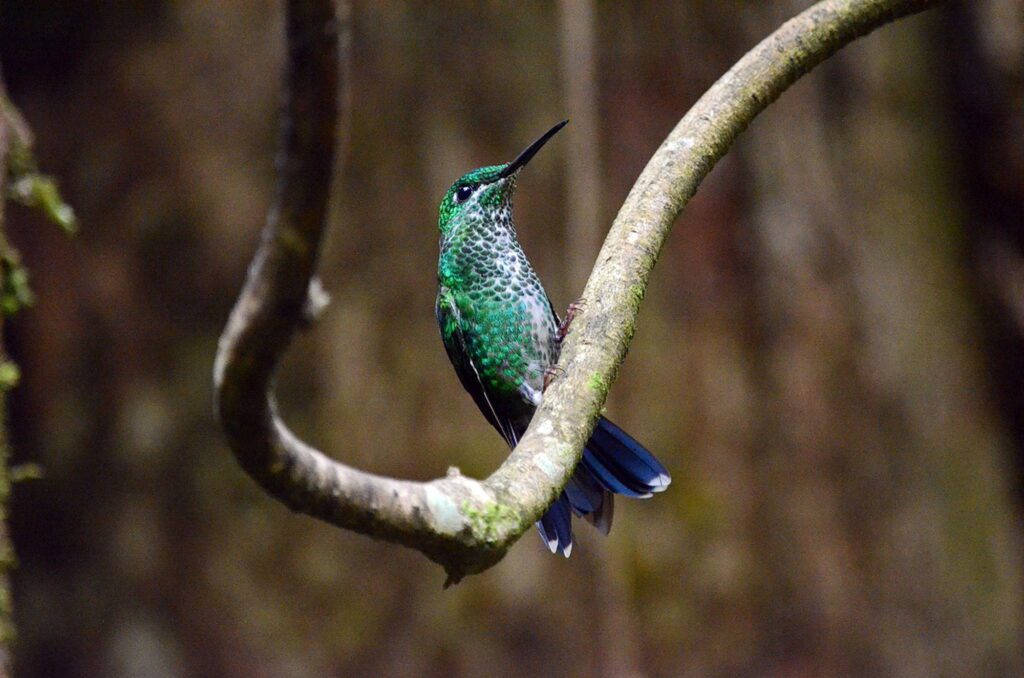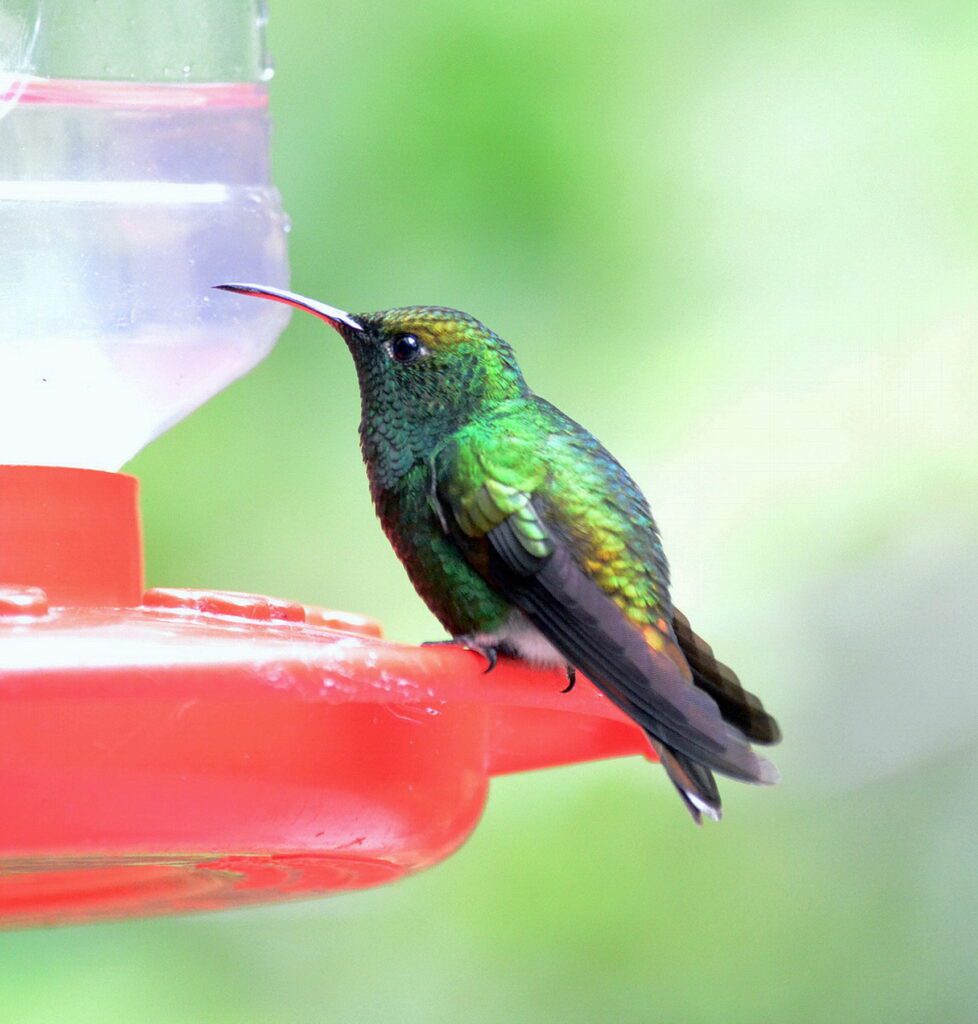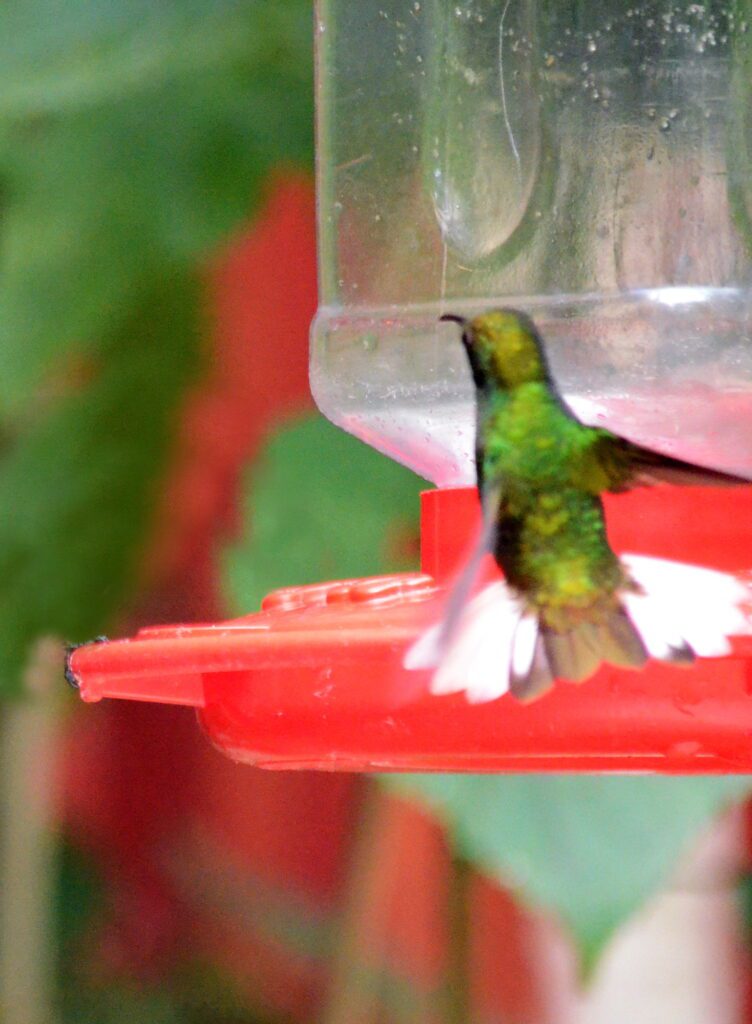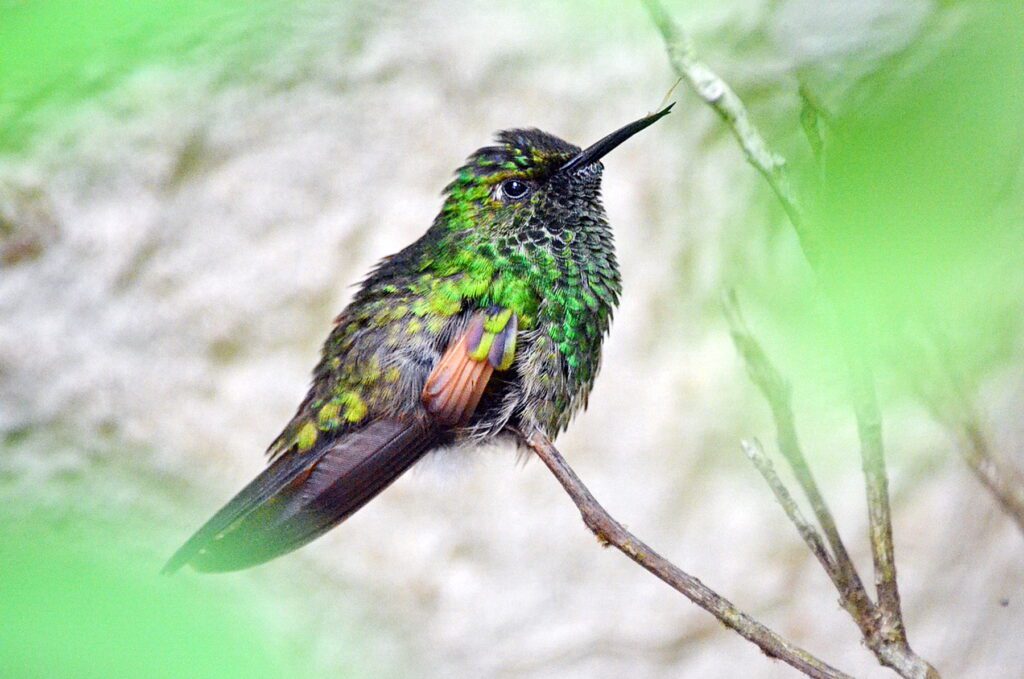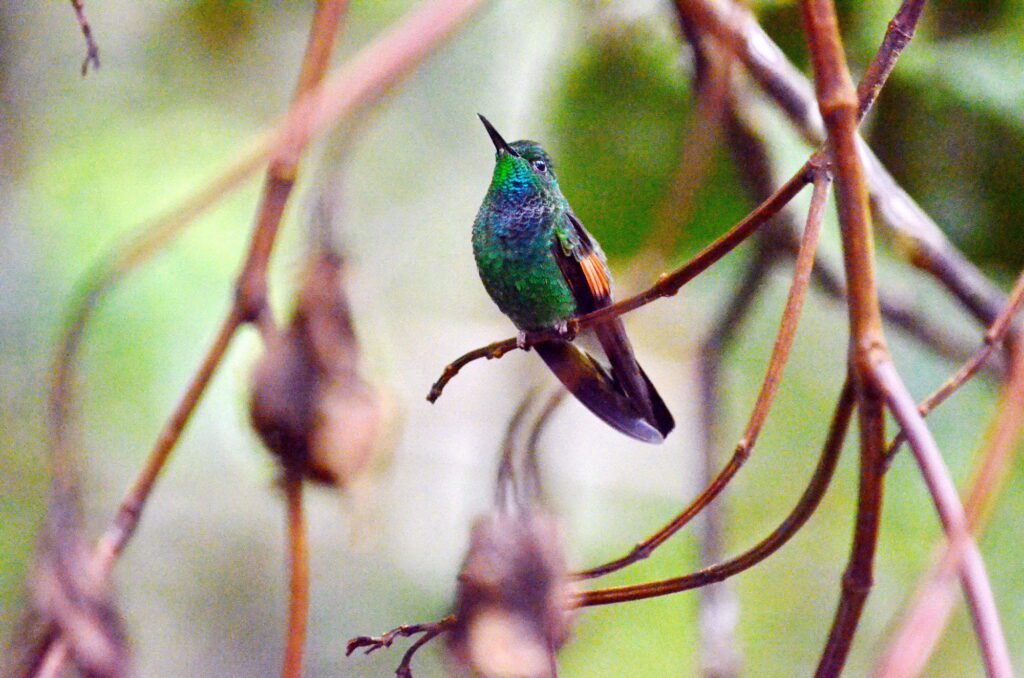Dazzled by Hummingbirds, Monteverde, Costa Rica
Coming off a high from our guided hike in the Monteverde Cloud Forest Biological Reserve in Costa Rica, Bob and I poked over to the Monteverde Hummingbird Gallery situated at the same entrance area. We were dazzled by hummingbirds of several species.
The Hummingbird Gallery was a great place to spend some quiet time after a hike in the Cloud Forest. Outfitted with hummingbird feeders and surrounded by gardens, the Hummingbird Gallery is a magnet for many species of hummingbirds. Bob and I were agog at the diminutive birds that shimmered like jewels in the sunlight. One such hummingbird was this male Purple-throated Mountain-Gem.
Purple-throated Mountain-Gems breed in the mountains of southern Nicaragua, northern Costa Rica and western Panama. Here we see a sweet female.
Forested areas of hilly terrain are the perfect habitat for Purple-throated Mountain-Gems, and in fact, the Monteverde Hummingbird Gallery is located near the top of the Monteverde Cloud Forest on a small hill backed by a forest. The verdant greenery made a perfect backdrop for this individual.
With a good number of feeders spaced out along the front of the building, there were always numerous hummingbirds availing themselves of the sweet syrup. This Green Hermit stood out from the others because of its long curved bill. We also took note of the white-tipped tail feathers.
Next up to the irresistible liquid was a Lesser Violetear. This darling hummingbird is sometimes referred to as a Mountain Violetear.
The name, Lesser Violetear, refers to the fact that the violet-blue patches behind the eyes become erect resembling ears when a male is excited. This photo captures a male with the ear patches slightly raised.
With numerous hummingbirds vying for a position at the feeders, it meant Bob and I often spotted others biding their time along the fringes of the property. It was interesting to learn that hummingbirds spend more than half of their time preening, chirping or at rest. This Lesser Violetear was taking a break from constant hovering, but it still had its tongue extended.
It was impossible to overlook a majestic Violet Sabrewing since members of this species are the largest of hummingbirds in Mexico and Central America. Each bird is between 5-6 inches long.
Reminding me of glittering sapphires, the metallic violet-blue of the Violet Sabrewing’s belly contrasted sharply with the pale background.
Violet Sabrewings prefer to inhabit the edges and interior of humid evergreen montane forest. This Violet Sabrewing routinely displayed its aggressive behaviour by chasing other hummingbirds away from the feeding station.
Rivalling the Violet Sabrewing for attractive plumage were a number of Green-crowned Brilliant Hummingbirds like this one. This species is a resident breeder in the highlands of Costa Rica.
The feathers of some hummingbirds appear iridescent when in fact they are only a dull blackish colour. A thin covering of clear cells structured to reflect light gives the feathers their iridescence. This prism-like feature has black feathers appearing as different colours depending on how the light strikes them and depending on the species. We were pleased when this Green-crowned Brilliant turned and caught the light on its metallic blue throat patch since the iridescence of the throat patch is only visible at some angles.
Twinkling in some errant rays of sunlight was another male Green-crowned Brilliant. Members of this species are also referred to as Green-fronted Brilliants.
This juvenile male Green-crowned Brilliant exhibits plumage that is a bit further advanced.
Female Green-crowned Brilliant Hummingbirds are significantly different in appearance. Whitish underparts are heavily speckled with green spots that coalesce on the flanks of the birds. Also of note is the short white stripe on each cheek.
I had to include one photo of a Green-crowned Brilliant that shows the beautiful blue tail tipped in white. You may have also noticed that both males and females have a white spot behind the eye.
With hummingbirds darting hither and fro, Bob and I hardly knew where to look first. We were like kids in a candy store! This Coppery-headed Emerald with its glistening crown was a real treasure to see. This species is endemic to Costa Rica. At only three-inches long, it exudes charm with its slightly curved bill having a pinkish hue.
Although a poor photo, I like that the bright white tail feathers of the Coppery-headed Emerald can be seen when this bird hovered at a feeder.
With 53 species of hummingbirds in Costa Rica, Bob and I were happy to rack up a few sightings to add to our Life List of birds. A Stripe-tailed Hummingbird was next to delight us. It sat perched in a cool, shady spot.
A bright rusty panel on the wings is a trait common to both the male and female Stripe-tailed Hummingbirds.
It was nice to see this Stripe-tailed Hummingbird darting among the native flowers in search of nectar, and that is when we managed a glimpse of the white stripes of the open tail. It was feeders that attracted a good share of the hummingbirds that Bob and I observed on our first visit to Costa Rica in 2018, but since then, things have changed. Through ten years of research by the owners of the Monteverde Hummingbird Gallery, Michael and Patricia Fogden determined that feeding sugared water to hummingbirds is harmful to them. Based on the Fogden’s research, the Costa Rican government banned hummingbird feeders in the country, however the Monteverde Hummingbird Gallery is still allowed to use feeders in their efforts to continue research.
Frame to Frame – Bob and Jean

